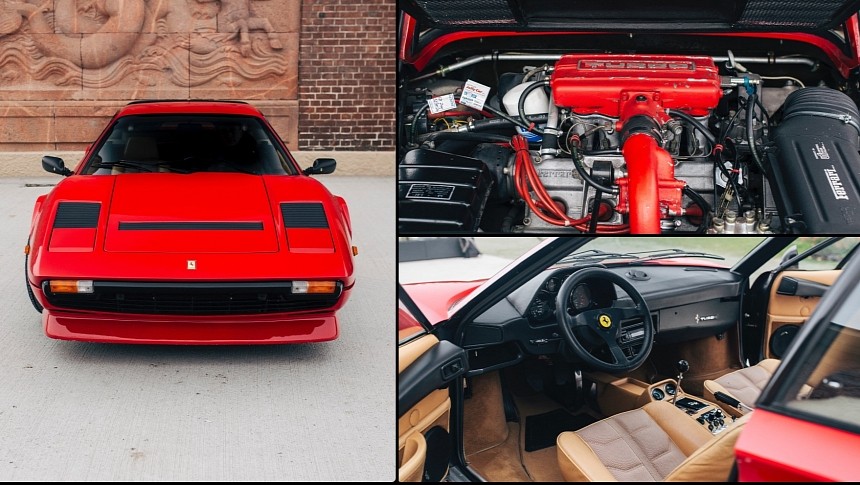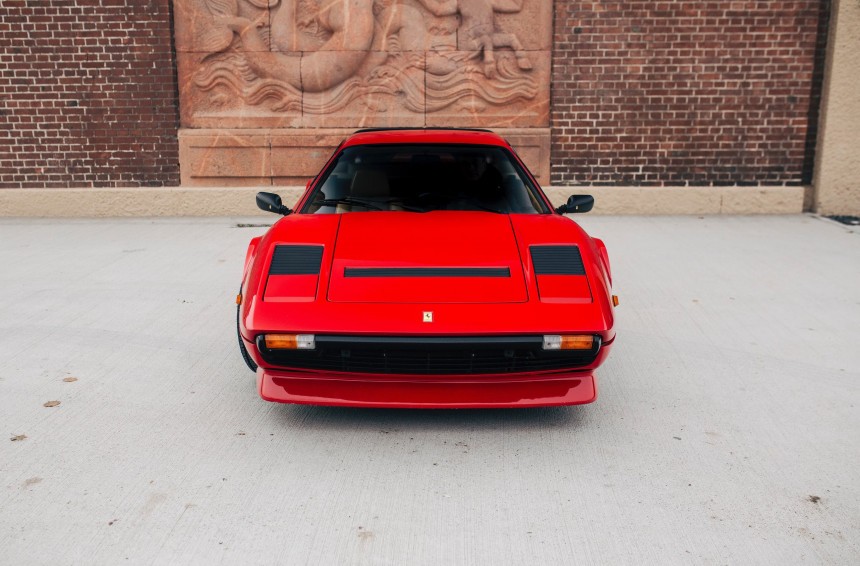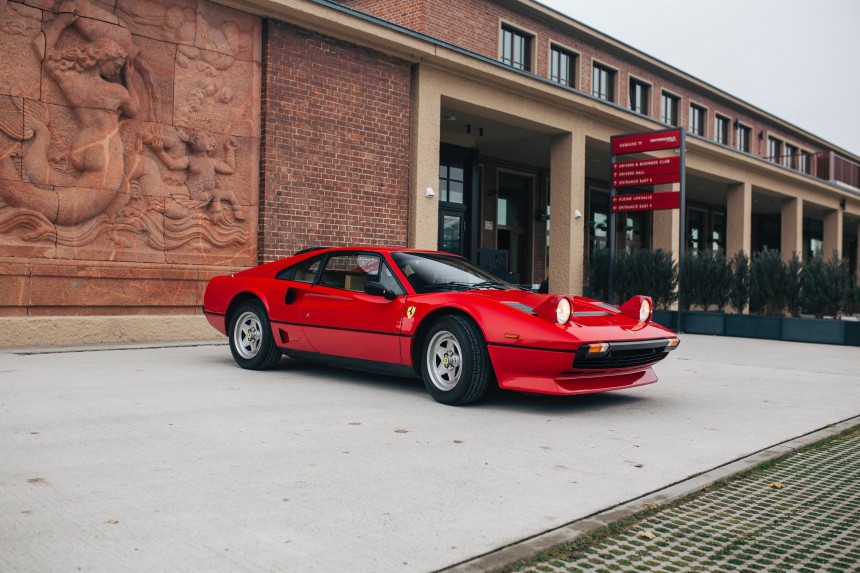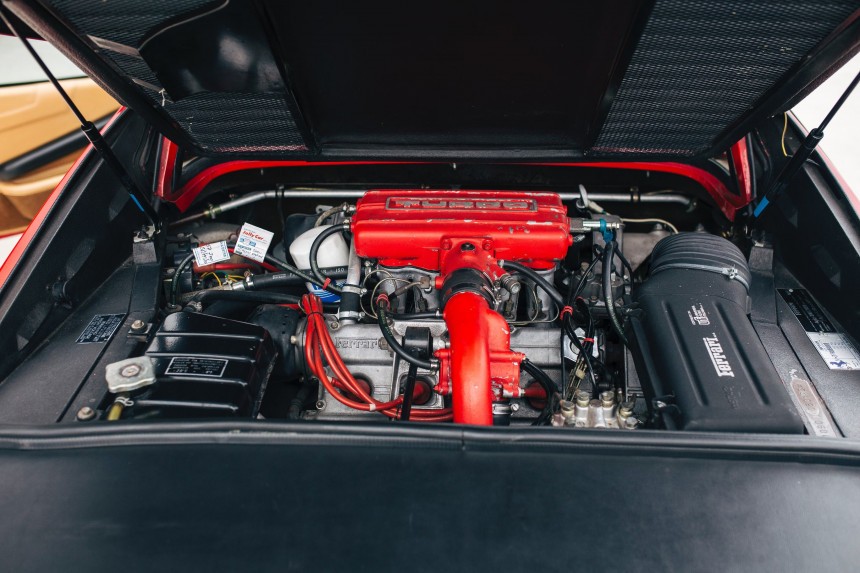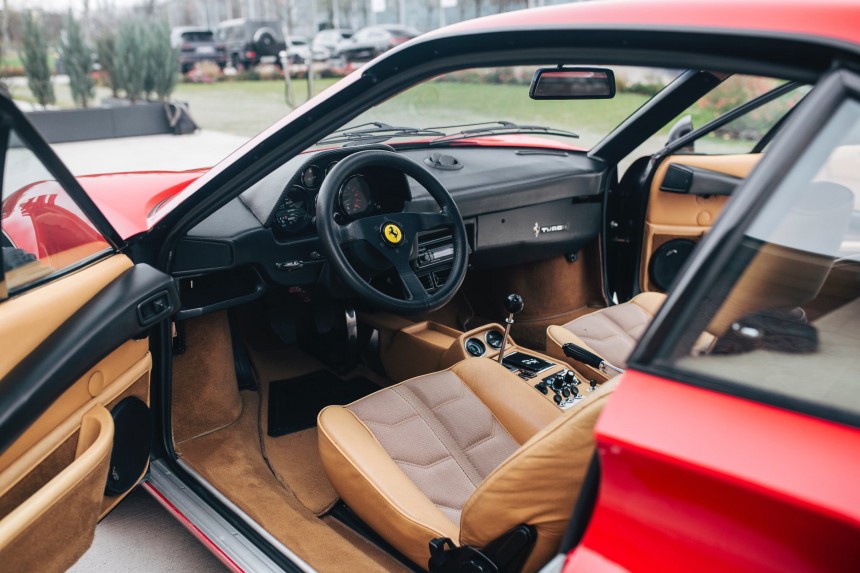Turbocharging used to be considered somewhat of a witchcraft back in the day. The biggest automaker of the Big Three in Detroit rolled out this newfangled technology in series-production vehicles in the 1960s, but alas, the Oldsmobile Jetfire and Chevrolet Corvair Monza Spyder proved hideously unreliable in the real world.
It may seem a little weird for us to consider turbocharging as being exotic, but remember that 1962 was more than six decades ago. It's a ubiquitous technology in this day and age, with forced induction found in pretty much everything from a Civic to million-dollar exotica such as the McLaren Speedtail.
By their nature, turbochargers are considerably more efficient than America's traditional forced induction technology. Not only do turbos increase power and torque more efficiently than a good ol' supercharger, but said efficiency also results in fewer emissions. Turbocharging also had the side effect of replacing large powerplants with four-pot lumps, but downsizing used to look very different in the 1970s and 1980s.
The Prancing Horse of Maranello introduced the Dino engine family in the 1960s, originally comprising 2.0- and 2.4-liter V6 powerplants. An eight-cylinder sibling with a displacement of 2.9 liters premiered in 1973 in the 308 GT4, followed by a 2.0-liter take on that V8.
Why, though? As it happens, the 1970s were a period of tremendous economic and political turmoil in the Republic of Italy. Social unrest was through the roof due to high levels of inflation and unemployment. The oil crisis of 1973 only exacerbated the situation. Italians refer to said era as Anni di Piombo, as in Years of Lead.
Politicians from both sides of the divide had to take drastic measures during this epoch, with one such measure coming in the guise of a scarcely believable 38 percent value added tax on automobiles with engines larger than 2.0 liters. It's in this troubled context that Ferrari had to downsize the Dino V8 by reducing cylinder bore from 81 to 66.8 millimeters.
Originally used in the Dino 208 GT4, said engine was then employed in the Ferrari-branded 208 GT4 under the codename F106C. From 1980 to 1982, the 208 GTB and 208 GTS were the last applications of this naturally-aspirated V8, then dubbed F106CB. In the background, Ferrari was experimenting with turbos. The 1981 season's 126C racing car was the Scuderia's first-ever turbocharged monoposto. Through 1984, it racked up 10 GP wins and two constructors' titles.
Using the lessons learned from the 126C, the Italian outfit upgraded the 2.0-liter V8 in the 208 series with a KKK-supplied turbocharger. Due to the boost pressure, Ferrari reduced the compression ratio from 9.0:1 to 7.0:1 to keep things under control in everyday driving scenarios. How much of a difference did the exhaust-driven turbocharger make in the 208 series?
In a nutshell, it was tremendously better. The free-breathing V8 made 155 ps at 6,800 revolutions per minute and 170 Nm at 4,200 revolutions per minute in a car weighing 1,302 kilograms, with said figures converting to 2,870 pounds, 125 pound-feet, and 153 horsepower in old money. The 208 GTB in turbo attire was an idea lighter, and its force-fed V8 cranked out 220 ps (217 hp) and 240 Nm (177 lb-ft) when new.
Peak power and torque are produced higher in the rev range, namely at 7,000 and 4,800 rpm, but it was the right upgrade to make. The Italian manufacturer also took inspiration from the F106D for the intercooled engine of the 328-based GTB Turbo and GTS Turbo that replaced the 208 GTB Turbo and 208 GTS Turbo. The F106D was instrumental in the development of a legendary homologation special as well, the twin-turbo 288 GTO, which was eventually replaced by the F40.
Aside from the 208's turbocharged engine, the Prancing Horse worked its magic on the five-speed manual transmission by changing the gear ratios to suit the powerplant's character. Beautified with a bright red-finished intake manifold that reads TURBO in uppercase letters, the F106D is rocking electronic ignition supplied by Magneti Marelli. Bosch K-Jetronic mechanical fuel injection also needs to be mentioned, as well as the engine's transverse layout.
Introduced with much pomp and circumstance at the 1982 Turin Motor Show, the 208 GTB Turbo perfectly sidestepped the luxury tax imposed on automobiles with engines larger than 2.0 liters. It was 20 metric ponies down on the four-valve version of the 308 series, too small of a difference to redirect potential customers of the Prancing Horse to the larger-engined 308.
The chassis of the 208 Turbo didn't differ too much from that of its predecessor, although Ferrari did use a different codename: F106DB100 for the fixed-head berlinetta and F106DS100 for the targa-topped body style as opposed to F160CB100 and F160CS100. Gifted with magnesium-alloy wheels from Campagnolo, the 208 Turbo came standard with Michelin tires instead of Pirelli-sourced rubber boots.
Unequal-length wishbones keep every corner in check with the help of anti-roll bars for both ends, Koni telescopic dampers, and coil springs. Disc brakes were standard as well, featuring ventilated rotors and two circuits rather than one for the sake of safety. If one of those hydraulic circuits develops a leak, the other is adequately competent at stopping the vehicle safely.
Bodied mostly in steel, the 208 Turbo ended production in late 1985. Based around a tubular steel chassis, this hideously underrated model series totaled 687 vehicles, all in left-hand drive. That may seem a little disappointing, but do bear in mind that Ferrari developed this fellow solely for its domestic market.
437 units were specified as coupes, with the other 250 leaving the factory as targa-topped convertibles. The naturally-aspirated 208 from before is rarer still, with Ferrari building 160 coupes and merely 140 targas.
By their nature, turbochargers are considerably more efficient than America's traditional forced induction technology. Not only do turbos increase power and torque more efficiently than a good ol' supercharger, but said efficiency also results in fewer emissions. Turbocharging also had the side effect of replacing large powerplants with four-pot lumps, but downsizing used to look very different in the 1970s and 1980s.
The Prancing Horse of Maranello introduced the Dino engine family in the 1960s, originally comprising 2.0- and 2.4-liter V6 powerplants. An eight-cylinder sibling with a displacement of 2.9 liters premiered in 1973 in the 308 GT4, followed by a 2.0-liter take on that V8.
Why, though? As it happens, the 1970s were a period of tremendous economic and political turmoil in the Republic of Italy. Social unrest was through the roof due to high levels of inflation and unemployment. The oil crisis of 1973 only exacerbated the situation. Italians refer to said era as Anni di Piombo, as in Years of Lead.
Politicians from both sides of the divide had to take drastic measures during this epoch, with one such measure coming in the guise of a scarcely believable 38 percent value added tax on automobiles with engines larger than 2.0 liters. It's in this troubled context that Ferrari had to downsize the Dino V8 by reducing cylinder bore from 81 to 66.8 millimeters.
Originally used in the Dino 208 GT4, said engine was then employed in the Ferrari-branded 208 GT4 under the codename F106C. From 1980 to 1982, the 208 GTB and 208 GTS were the last applications of this naturally-aspirated V8, then dubbed F106CB. In the background, Ferrari was experimenting with turbos. The 1981 season's 126C racing car was the Scuderia's first-ever turbocharged monoposto. Through 1984, it racked up 10 GP wins and two constructors' titles.
Using the lessons learned from the 126C, the Italian outfit upgraded the 2.0-liter V8 in the 208 series with a KKK-supplied turbocharger. Due to the boost pressure, Ferrari reduced the compression ratio from 9.0:1 to 7.0:1 to keep things under control in everyday driving scenarios. How much of a difference did the exhaust-driven turbocharger make in the 208 series?
In a nutshell, it was tremendously better. The free-breathing V8 made 155 ps at 6,800 revolutions per minute and 170 Nm at 4,200 revolutions per minute in a car weighing 1,302 kilograms, with said figures converting to 2,870 pounds, 125 pound-feet, and 153 horsepower in old money. The 208 GTB in turbo attire was an idea lighter, and its force-fed V8 cranked out 220 ps (217 hp) and 240 Nm (177 lb-ft) when new.
Peak power and torque are produced higher in the rev range, namely at 7,000 and 4,800 rpm, but it was the right upgrade to make. The Italian manufacturer also took inspiration from the F106D for the intercooled engine of the 328-based GTB Turbo and GTS Turbo that replaced the 208 GTB Turbo and 208 GTS Turbo. The F106D was instrumental in the development of a legendary homologation special as well, the twin-turbo 288 GTO, which was eventually replaced by the F40.
Aside from the 208's turbocharged engine, the Prancing Horse worked its magic on the five-speed manual transmission by changing the gear ratios to suit the powerplant's character. Beautified with a bright red-finished intake manifold that reads TURBO in uppercase letters, the F106D is rocking electronic ignition supplied by Magneti Marelli. Bosch K-Jetronic mechanical fuel injection also needs to be mentioned, as well as the engine's transverse layout.
Introduced with much pomp and circumstance at the 1982 Turin Motor Show, the 208 GTB Turbo perfectly sidestepped the luxury tax imposed on automobiles with engines larger than 2.0 liters. It was 20 metric ponies down on the four-valve version of the 308 series, too small of a difference to redirect potential customers of the Prancing Horse to the larger-engined 308.
The chassis of the 208 Turbo didn't differ too much from that of its predecessor, although Ferrari did use a different codename: F106DB100 for the fixed-head berlinetta and F106DS100 for the targa-topped body style as opposed to F160CB100 and F160CS100. Gifted with magnesium-alloy wheels from Campagnolo, the 208 Turbo came standard with Michelin tires instead of Pirelli-sourced rubber boots.
Unequal-length wishbones keep every corner in check with the help of anti-roll bars for both ends, Koni telescopic dampers, and coil springs. Disc brakes were standard as well, featuring ventilated rotors and two circuits rather than one for the sake of safety. If one of those hydraulic circuits develops a leak, the other is adequately competent at stopping the vehicle safely.
Bodied mostly in steel, the 208 Turbo ended production in late 1985. Based around a tubular steel chassis, this hideously underrated model series totaled 687 vehicles, all in left-hand drive. That may seem a little disappointing, but do bear in mind that Ferrari developed this fellow solely for its domestic market.
437 units were specified as coupes, with the other 250 leaving the factory as targa-topped convertibles. The naturally-aspirated 208 from before is rarer still, with Ferrari building 160 coupes and merely 140 targas.
